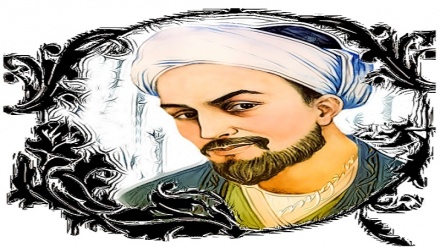Iranian notables, sources of global honor (195)
Welcome to this week's episode of the series "Iranian Notables, Sources of Global Honor". As it was said, Nur Ed-Din Abdul-Rahman Jaami is a famed and acclaimed Iranian poet, mystic, author, and thinker, who lived in 15th Century AD. Today, we continue to discuss the life, works, and views of this pre-eminent Iranian figure, and his inclination toward a branch of Sufism.
As a reminder, Jaami was born in Jaam, in Khorasan province in 1414 AD. His paternal ancestors lived in the city of Isfahan, gradually migrating to Khorasan region, and settling in the city of Jaam. A few years prior to Jaami's birth, his father took up residence in the city of Herat in the company of his family members. Jaami completed his preliminary studies in Jaam, learning Farsi literature and Arabic grammar, under his father. Later on, Jaami continued his studies in the educational and literary centers of Herat and Samarqand, gaining expertise and mastering Arabic language, in addition to scientific fields such as logic, philosophy, mathematics, and Islamic sciences. Thereafter, he developed an interest in mysticism. Given his vast knowledge, and his exemplary behavior, he established and maintained an especial status in the eyes of the rulers and Sultans of his day and age. Thus, he catapulted to fame and was honored and respected in all of the Farsi-speaking nations of his era, namely the Ottoman Empire, Asia, and Indian Subcontinent.
Jaami passed away in the year 1492 AD, aged 81, and was laid to rest in the city of Herat. The era of Jaami was one of the golden ages of Iran's art and literature.
One of the branches of mysticism, Naqshbandieh, was founded by Khajeh Bahaeddin Mohammad Naqshband Bukharai. This is a moderate branch of Sufism; which led to its rapid growth within the Timurid era. The leading figures of this branch of mysticism were committed to the protection and maintenance of the Islamic traditions. They were Sufis who were strongly opposed to any change or new interpretation of religion and Sharia. The key figures of this branch of Sufism were highly honored and respected by masses of people from all walks of life. In the early years of rule of Timurid Dynasty, the key figures of this branch of Sufism did not have extended relations with the Timurid royal court, and led a mystic lifestyle. However, later on, the power and status of this branch of Sufism grew and developed further, and the leaders of this branch of Sufism played a role in the majority of developments of the Timurid dynasty, acting a decisive part in resolution of the problems of ordinary people.
Jaami was a Sunni Muslim and he was also one of the followers of the Naqshbandieh branch of mysticism. This branch of Sufism wielded power in the then ruling system, which could be one of the reasons behind the inclination of Amir Alishir Navai, the then knowledgeable vizier of the royal court of Sultan Hussein Baiqara, and the renowned Iranian poet, Jaami, to this branch of mysticism.
Jaami developed a tendency toward Sufism while learning the common sciences of his era. At this point in time, he was residing in the Nezamiyeh School in Herat. In order to further his academic studies, he left Herat for the city of Samarqand, which was one of the hubs and centers of science in his day and age.
The life of this acclaimed poet can be divided into three phases. In the first phase of his life, he acquired the common sciences of his era in the cities of Herat and Samarqand. In the second stage of his life, he joined the Naqshbandieh branch of Sufism, and throughout his third phase in life, he made numerous accomplishments, including the publication of his books and compilations.
Meanwhile, Jaami never claimed to be a Sufi, and one of the main themes of his poems revolved round blaming those, who were hypocrites, baselessly claiming to believe in mysticism.
MR/ME


